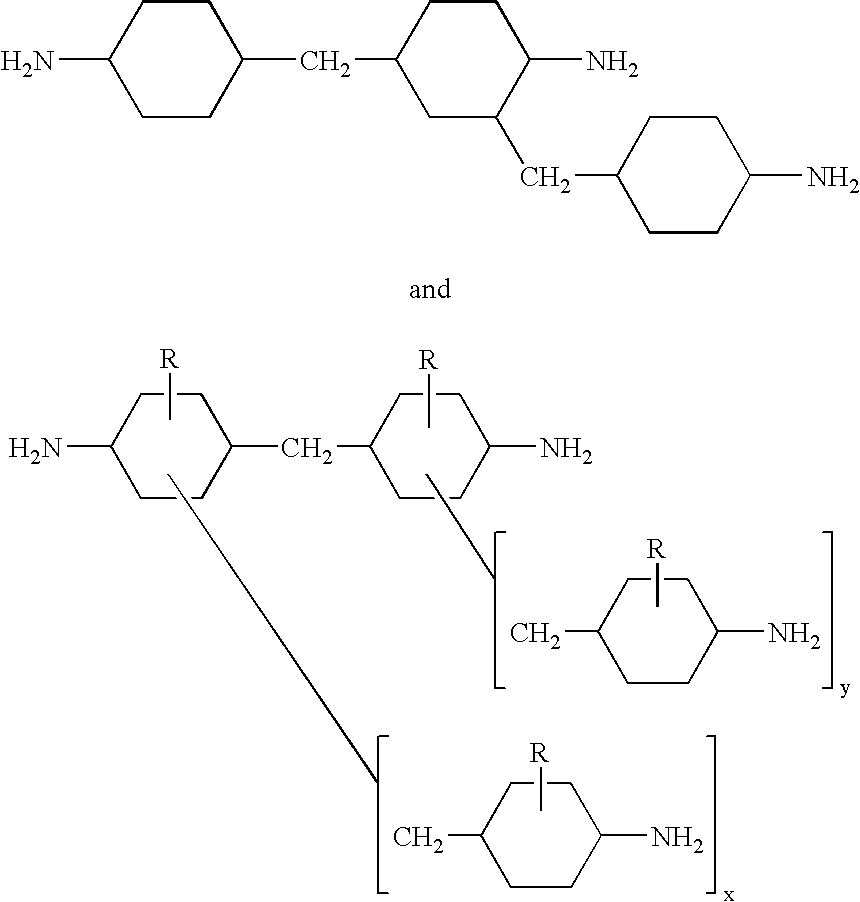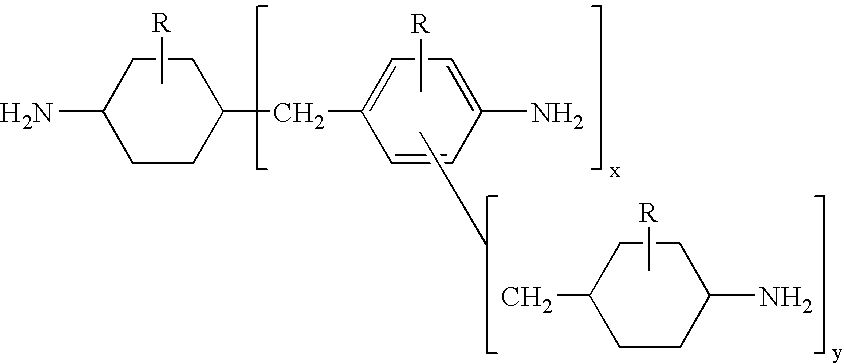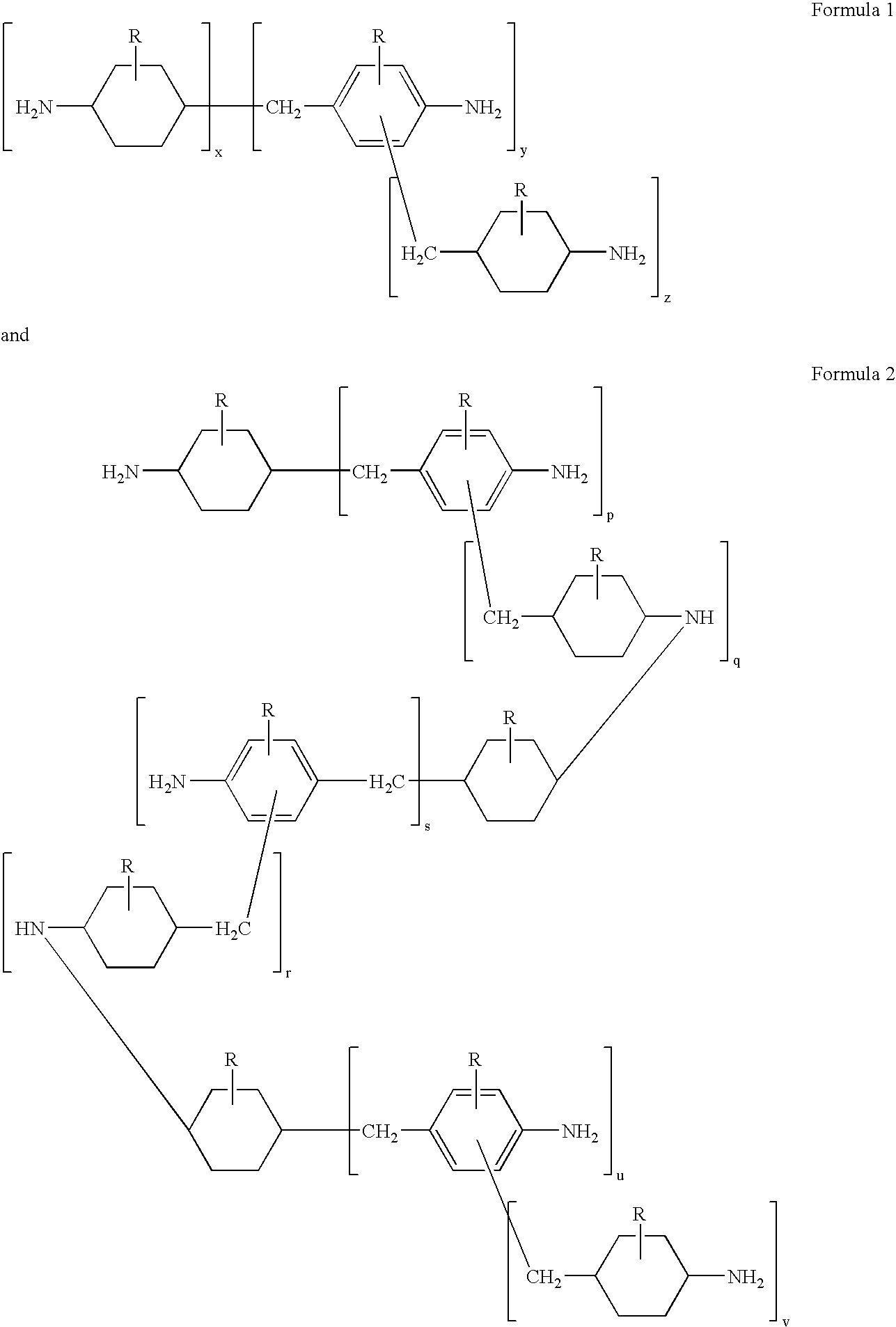Hydrogenation of methylenedianiline homologs and epoxy resins cured with same
- Summary
- Abstract
- Description
- Claims
- Application Information
AI Technical Summary
Benefits of technology
Problems solved by technology
Method used
Image
Examples
example 1
[0049]A series of epoxy curatives was generated from a Heavy MPCA feedstock and by blending of various feeds. These samples then were compared to an MPCA epoxy curative, in which the MPCA was based upon U.S. Pat. No. 5,280,091.
[0050]Sample 1 was prepared by hydrogenating MDA-50 followed by removal of the 2-ring components, leaving Heavy MPCA as the bottoms fraction.
[0051]Sample 2 was prepared by hydrogenating a 1:1 mix of MDA-85 (15% oligomer) and MDA-50 followed by removal of the 2-ring components, leaving Heavy MPCA as the bottoms fraction.
[0052]Sample 3 was prepared from a 1:1 mix of MDA-85 and MDA-50. Hydrogenation (carried to a greater extent resulting in higher secondary amine content) was followed by removal of the 2-ring components, leaving Heavy MPCA as the bottoms fraction.
[0053]Sample 4 was similar to Sample 3 except that the partially hydrogenated methylenedianiline (ABCHA) was present in greater level while the secondary amine content was lower.
[0054]Control Samples 5-8...
PUM
| Property | Measurement | Unit |
|---|---|---|
| Temperature | aaaaa | aaaaa |
| Temperature | aaaaa | aaaaa |
| Fraction | aaaaa | aaaaa |
Abstract
Description
Claims
Application Information
 Login to View More
Login to View More - R&D
- Intellectual Property
- Life Sciences
- Materials
- Tech Scout
- Unparalleled Data Quality
- Higher Quality Content
- 60% Fewer Hallucinations
Browse by: Latest US Patents, China's latest patents, Technical Efficacy Thesaurus, Application Domain, Technology Topic, Popular Technical Reports.
© 2025 PatSnap. All rights reserved.Legal|Privacy policy|Modern Slavery Act Transparency Statement|Sitemap|About US| Contact US: help@patsnap.com



